Electronic claims management systems (ECMS) are designed to simplify the often-complex process of submitting, managing, and processing insurance claims. Unlike the traditional digital claims processing, which involved extensive paperwork, manual entry, and time-consuming follow-ups, ECMS automates and optimises these tasks.
In this article, we will explore the functioning, advantages, and disadvantages of ECMS and review some of the top systems available in the market today, including Medesk, Kareo, TherapyNotes, Riskonnect, and SimplePractice.
Learn how to simplify your practice workflow and free up more time for patients with Medesk.
Open the detailed description >>Why practices use electronic claims management software
Managing claims ensures that both providers and patients receive fair and timely compensation for the care they provide and receive. However, medical claims are not always straightforward and simple. They involve various challenges and complexities that require careful management and automation. Here are some of these challenges.
Medical claims must contain accurate and complete information about the patient, provider, diagnosis, treatment, costs, and coverage. Any errors or omissions can result in denied claims, delays, or underpayments.
According to the Premier, nearly 15% of all claims submitted to private payers for reimbursement are initially denied. Over half (54.3%) of denials by private payers were ultimately overturned and the claims paid, but only after multiple, costly rounds of provider appeals.
Medicare claims must comply with the rules and regulations of various entities, such as the CMS, the HIPAA, the ICD, and the CPT. These rules and regulations are constantly changing and evolving, and providers must keep up with them to avoid fines, audits, or lawsuits.
Medical claims are vulnerable to fraud and abuse, such as billing for services not rendered, recoding or splitting services, duplicating or falsifying claims, and using false or stolen identities.
According to the National Healthcare Fraud Association, fraud and abuse costs the U.S. healthcare system about $68 billion a year, or about 3 percent of total healthcare spending.
Medical claims are complex and vary depending on the type of service, provider, payer, patient, and situation. For example, there are different types of claims, such as professional, institutional, dental, pharmaceutical, and ophthalmic.
Also, providers must learn various policies and contracts to determine eligibility, coverage, benefits, and reimbursement, such as fee-for-service, per capita, bundled payment, or value-based payment.
These challenges and complexities make medical claims management a tedious, costly, and error-prone process that consumes time and resources for providers and payers.
In industries such as insurance, specialized comparison tools like this CTP greenslip price comparison resource help users evaluate and manage billing options efficiently, echoing the need for transparency and ease found in electronic claims management systems.
To overcome these challenges and complexities, many healthcare organisations are turning to innovative solutions that leverage artificial intelligence, Internet of Things, machine learning, natural language processing, computer vision, and blockchain for streamlined claims.
Solutions like ECMS aim to increase the clean claim rate and improve the efficiency, accuracy, quality, and transparency of medical claims while reducing administrative burden, operational costs, and fraud risk.
According to a report by the Council for Affordable Quality Health Care, the average cost to process a claim manually is $8.07, compared to $1.92 to process a claim electronically.
In addition, manual processing can take up to 60 days, compared to 10 days for electronic insurance claims processing.
Medesk helps automate scheduling and record-keeping, allowing you to recreate an individual approach to each patient, providing them with maximum attention.
Learn more >>How electronic claims management solutions work
Here are the main 4 steps a claim takes before being approved. Imagine you are a provider with a connected claims management platform.
- The system connects with Electronic Health Records (EHR) to automatically pull patient details like name, insurance information, and treatment data. The ECMS uses the captured information to create a claim, which is a formal request for payment sent to the patient’s insurance company.
- It checks the claim to make sure it meets all the rules and requirements, such as correct medical codes and accurate patient details.
- The software sends the claim electronically to the insurer, which reviews it to decide if it will be paid, partially paid, or denied. If any information is missing or incorrect, the ECMS alerts you so you can fix it quickly.
- Once the claim is approved, the insurance company sends the payment electronically. The ECMS tracks these payments and updates your records, making it easier to manage finances.
After these 4 steps, the analytical work begins. The system provides detailed reports on the status of claims, reasons for any denials, and payment trends. These insights help you understand your financial services health and improve your processes.
Throughout the process, the ECMS provides real-time updates on the claim's status, so you know where each claim stands and can take action if needed.
How cool is that?
By automating repetitive tasks, such as data entry and claim submission, ECMS significantly reduces the time needed to process claims, lessens administrative costs by eliminating paper-based processes, and facilitates better communication between payers and providers.
Review of Top 5 Electronic Claims Management Systems
1. Medesk
Medesk is a cloud-based PMS designed for small to midsized healthcare practices. It offers features such as automated medical billing, patient data management, and real-time digital claim status updates.
The platform is a unified ecosystem for managing both patient records and claims.
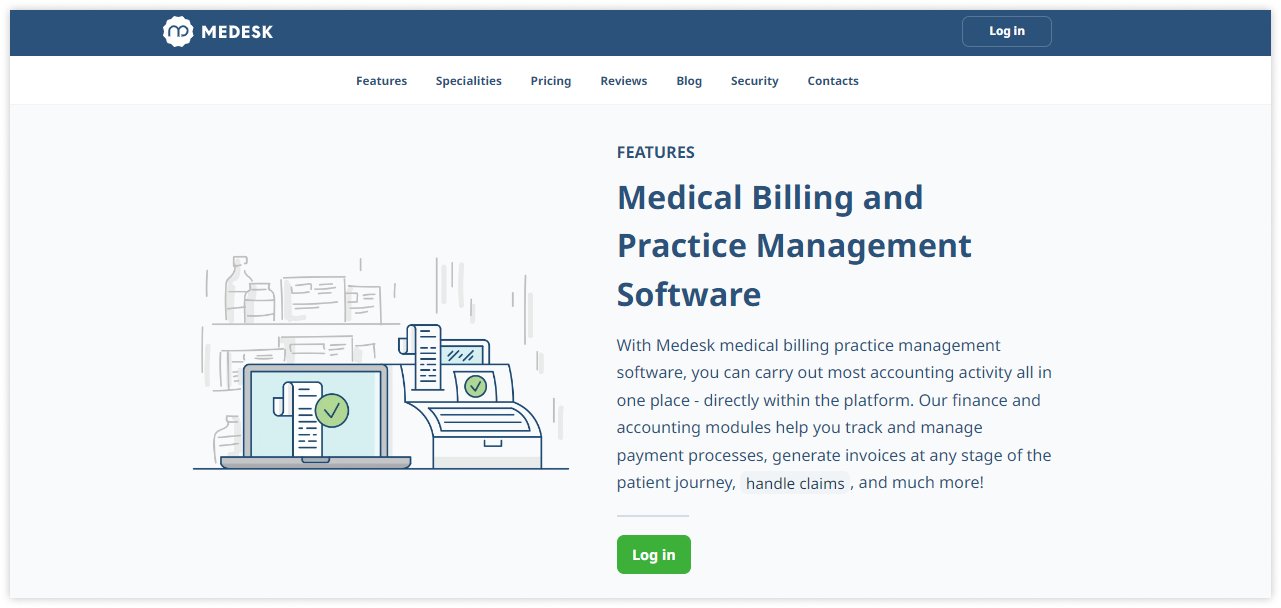
Medesk has a set of digital tools to carry out most accounting activity all in one place: track and manage payment processes, generate invoices at any stage of the patient journey, handle claims, and much more.
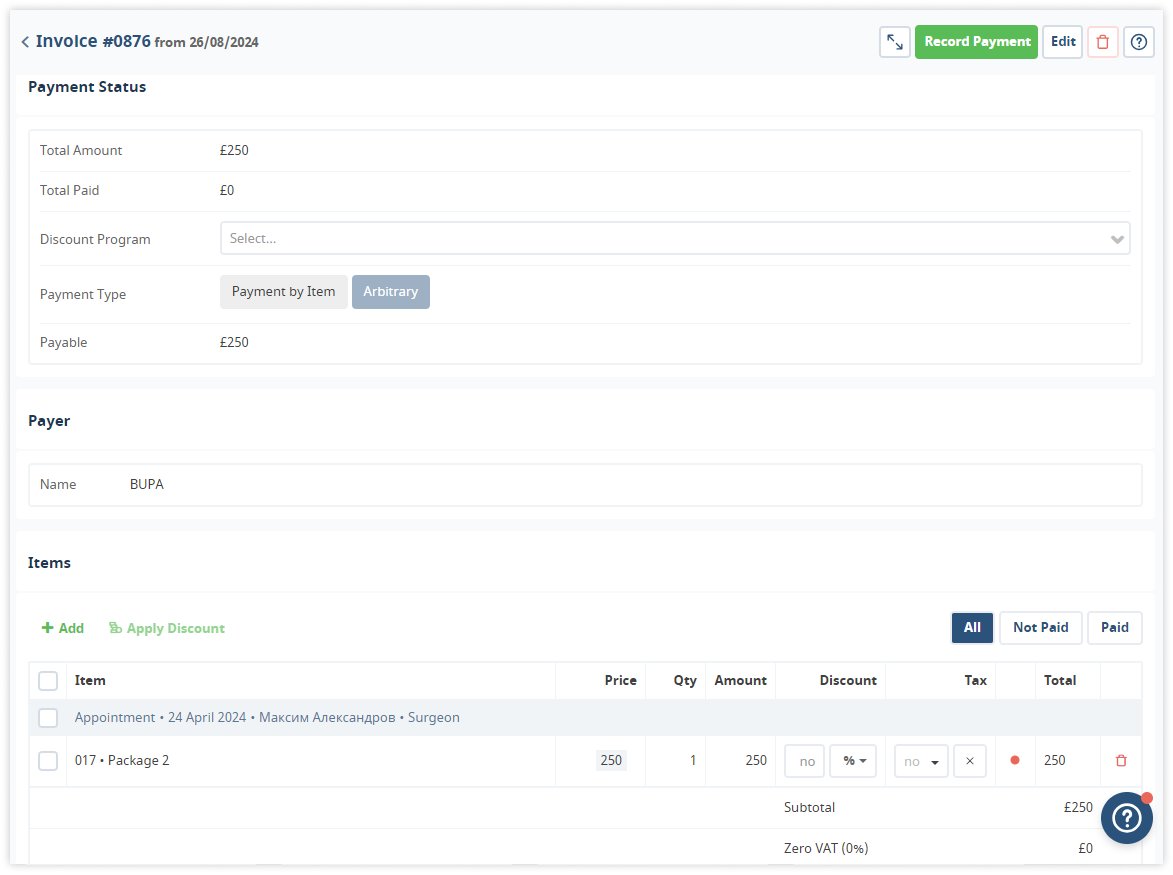
Medical billing software helps you to handle all accounting online thanks to Xero integration. You can sync invoices between these two softwares and process refunds or partial payments without wasting time syncing your records manually.
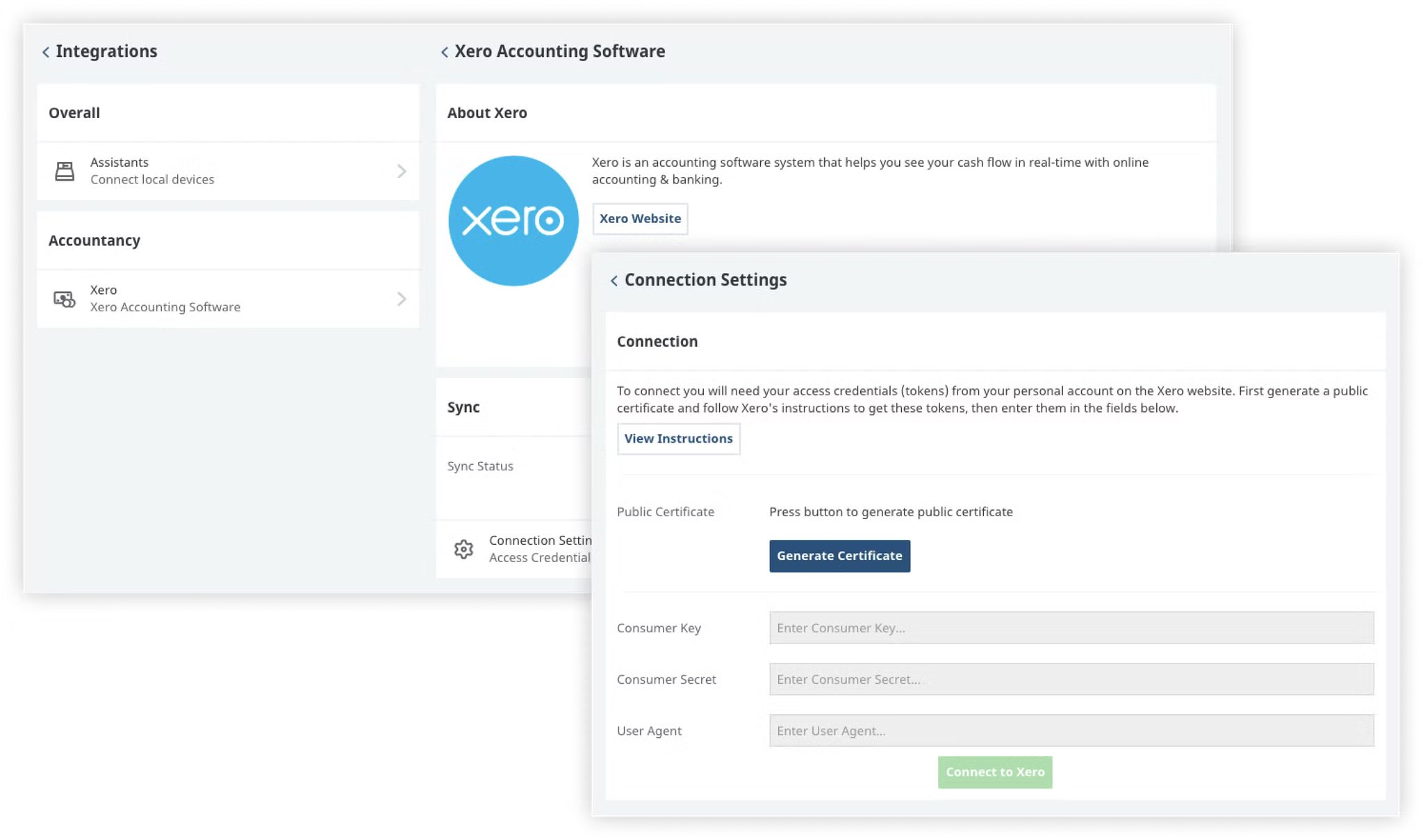
When scheduling an appointment while conversing with a patient over the phone, you can initiate the creation of a pro forma invoice. Simply locate and add the required services directly in the booking window on your calendar.
For patients using the online booking system, once they select a service and confirm their appointment slot, an invoice is automatically generated within Medesk. You can access and modify this invoice whenever needed, including during the actual consultation.
Once all claims have been processed and paid, Medesk will build a full financial reports dashboard in any form you like: table, pie chart, diagram, etc.
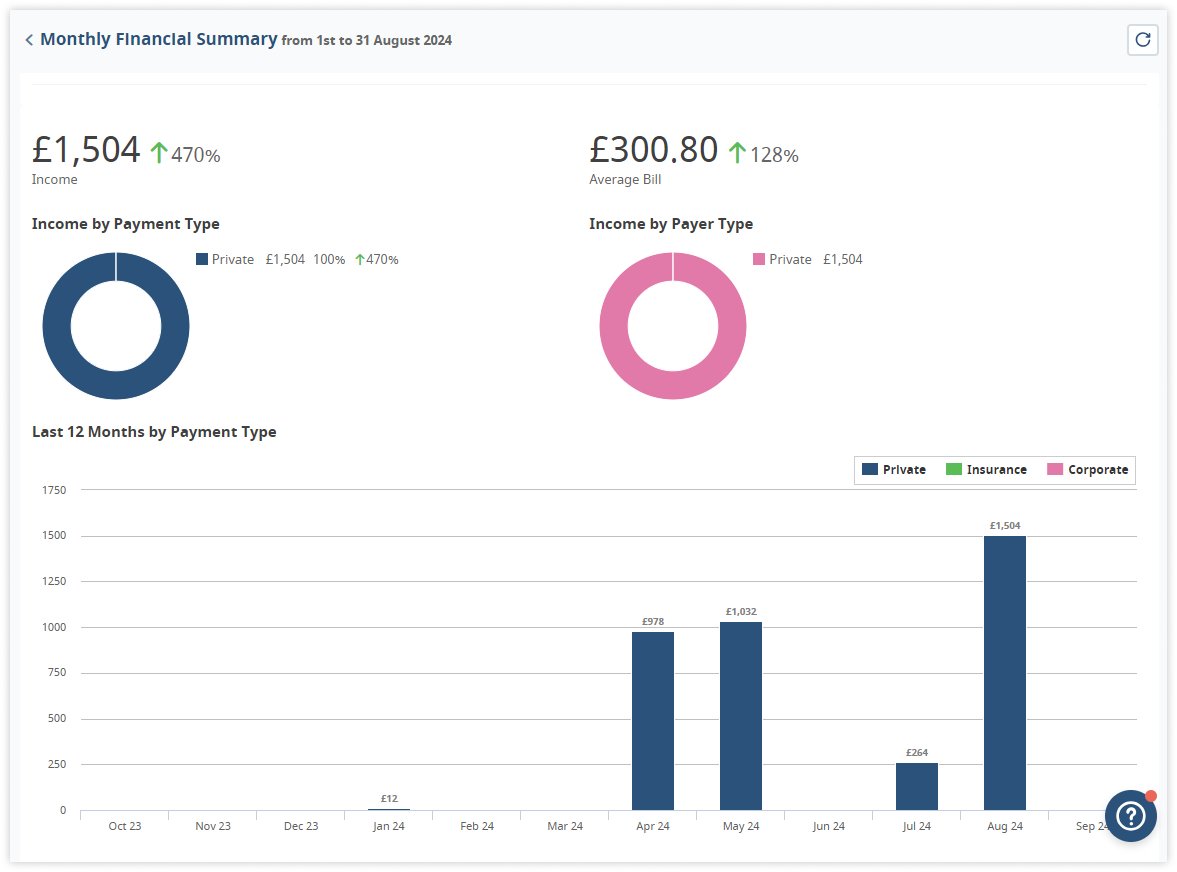
- Advantages: Easy to use, affordable pricing, strong data analytics capabilities.
- Disadvantages: Limited customisation options, primarily suited for smaller practices.
Users appreciate Medesk's user-friendly interface and robust support, which makes it easy for small practices to manage claims efficiently without needing extensive IT support.
Pricing
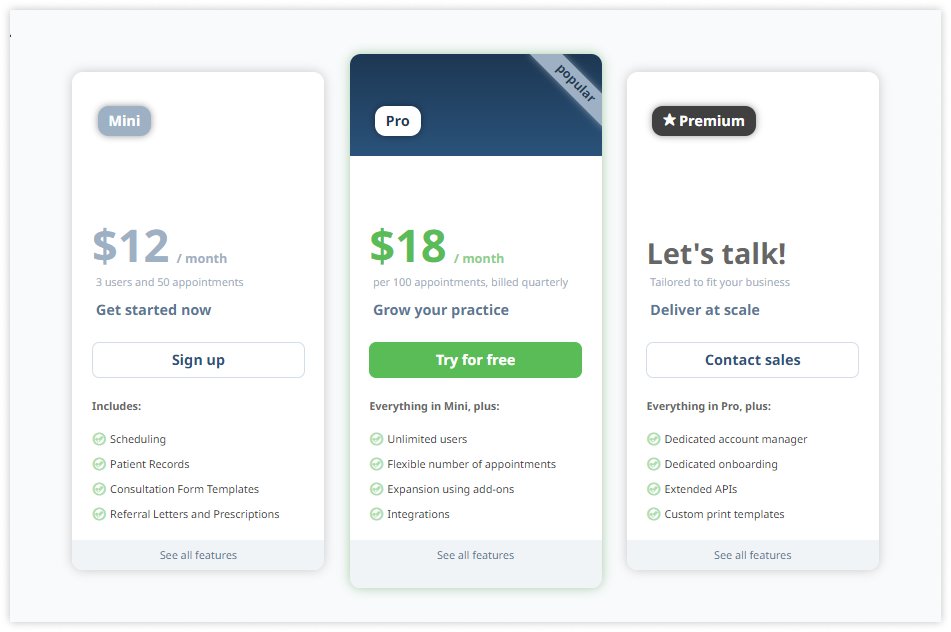
Choose from three plans: prices start at $12 per month for 3 users and 50 appointments. There is a 15-day free trial.
Appointment-based pricing plans help you save money. Compared to user-based subscriptions, you don't pay for a person who may have registered for a small task, such as transferring data, and not use the platform in the future.
Discover more about the essential features of Medesk and claim your free access today!
Explore now >>2. Tebra (ex Kareo)
Tebra is a popular practice management software known for its set of tools for medical billing, claims management, and patient engagement. It supports electronic claim submission, denial document management, and reporting.
Tebra also offers a mobile app for on-the-go access.
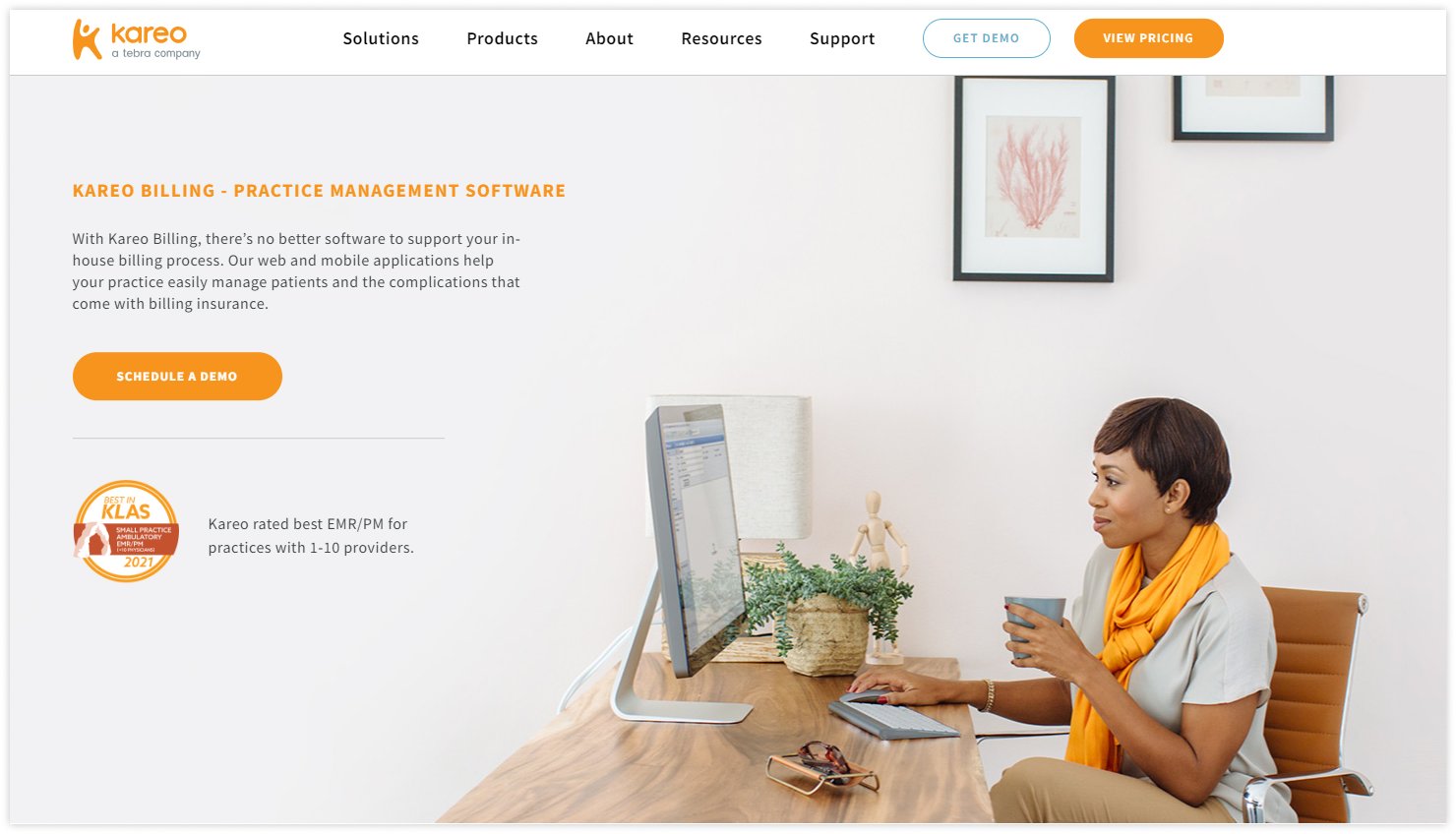
The platform allows you to send primary and secondary claims directly in the industry-standard ANSI 837P format. You don't need a separate account with clearinghouse services because all tasks can be done directly from Tebra.
Once a claim is approved, you can generate internal validation reports to highlight reports with missing claim information or those with an incorrect policy number. Tebra also allows you to get electronic remittance advice (ERA) reports once payers process your claims and issue payment.
Working with rejections and denials is also performed within the platform.
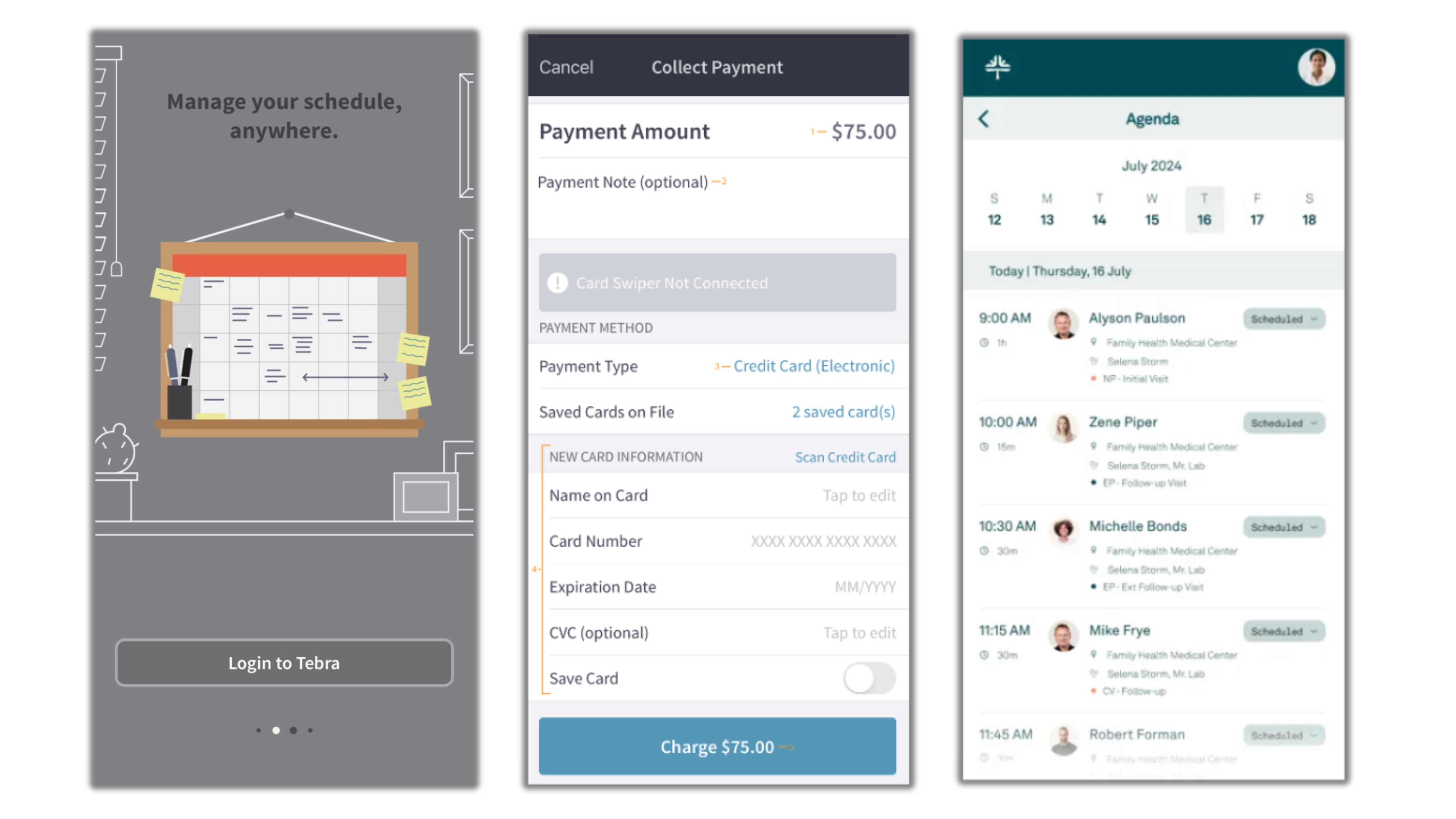
- Advantages: Comprehensive features, strong mobile accessibility, excellent customer experience.
- Disadvantages: Higher price point can be complex for new users.
Pricing
Tebra’s pricing starts at $150 per user per month for the basic plan, with additional costs for more advanced features and services. For plan details, contact the company’s manager.
3. TherapyNotes
TherapyNotes is designed specifically for mental health practitioners. It combines EHR functionalities with claims management features, including automated claims submission, batch processing, and payment tracking.
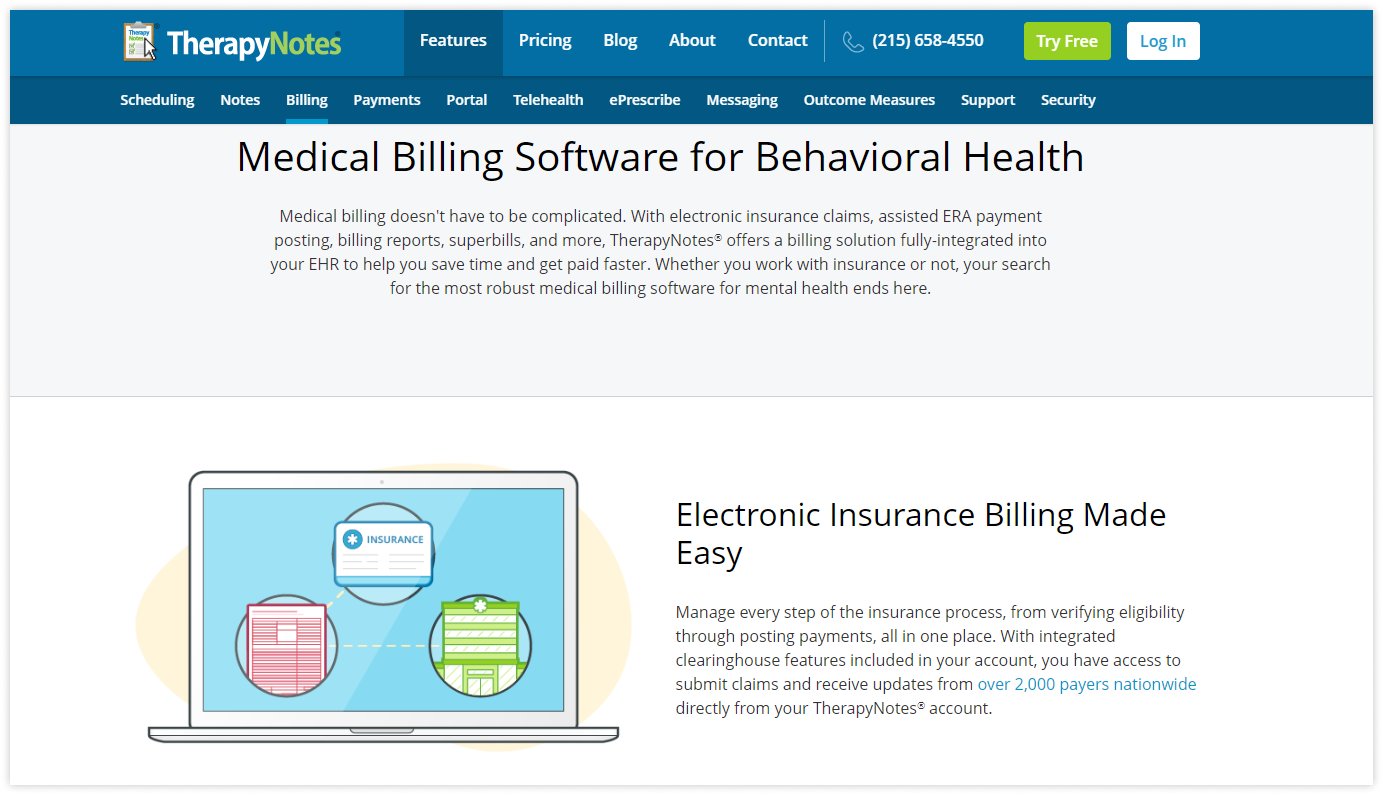
There are integrated clearinghouse features on the platform:
- Real time eligibility reports
- Clinician billing setting overrides
- Insurance claim scrubbing
- Electronic Remittance Advice (ERA).
Moreover, TherapyNotes still provides paper claims for payers without electronic claim support.
- Advantages: Tailored for mental health professionals; easy integration with EHR; reliable support.
- Disadvantages: Limited scalability for larger practices, focused on a specific niche.
Pricing
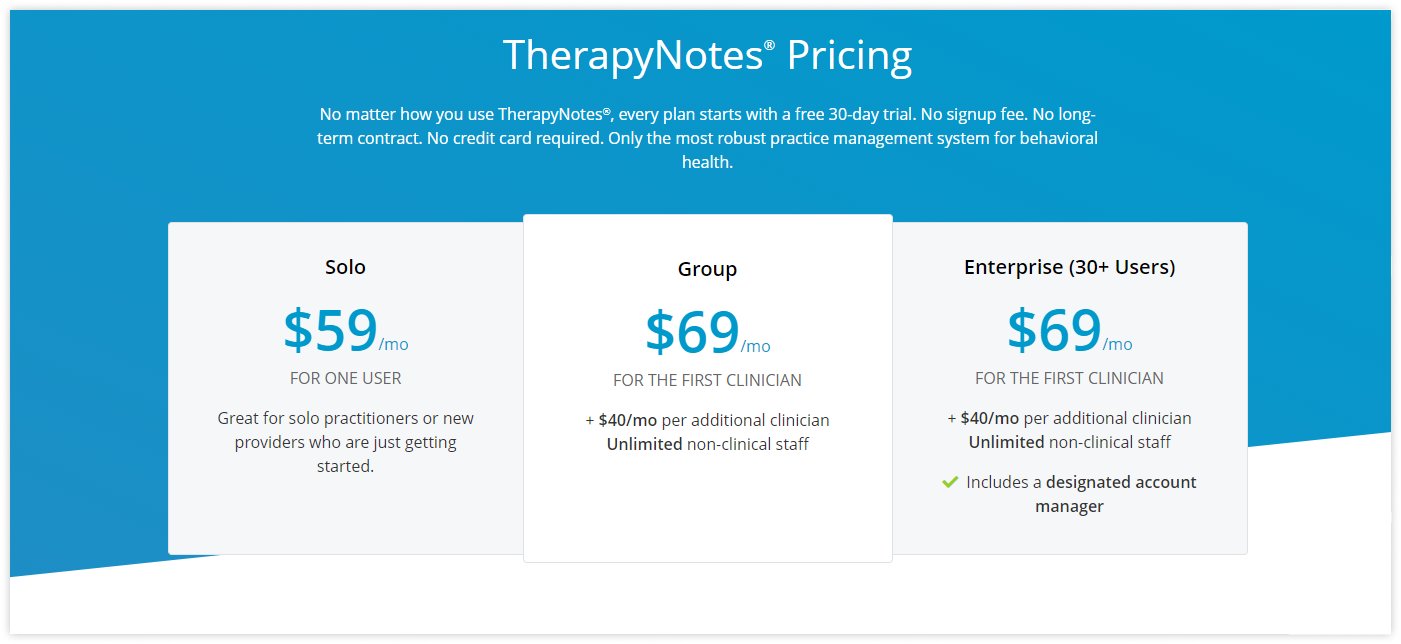
TherapyNotes offers three pricing plans. The starting price is $59 per month for one user.
You can evaluate the features of the platform with its 30-day free trial.
4. Riskonnect
Riskonnect is an integrated risk management software solution designed for larger healthcare organizations. It offers advanced claims analytics, automated workflows, and comprehensive reporting tools. The platform is highly customisable, making it suitable for complex healthcare environments.
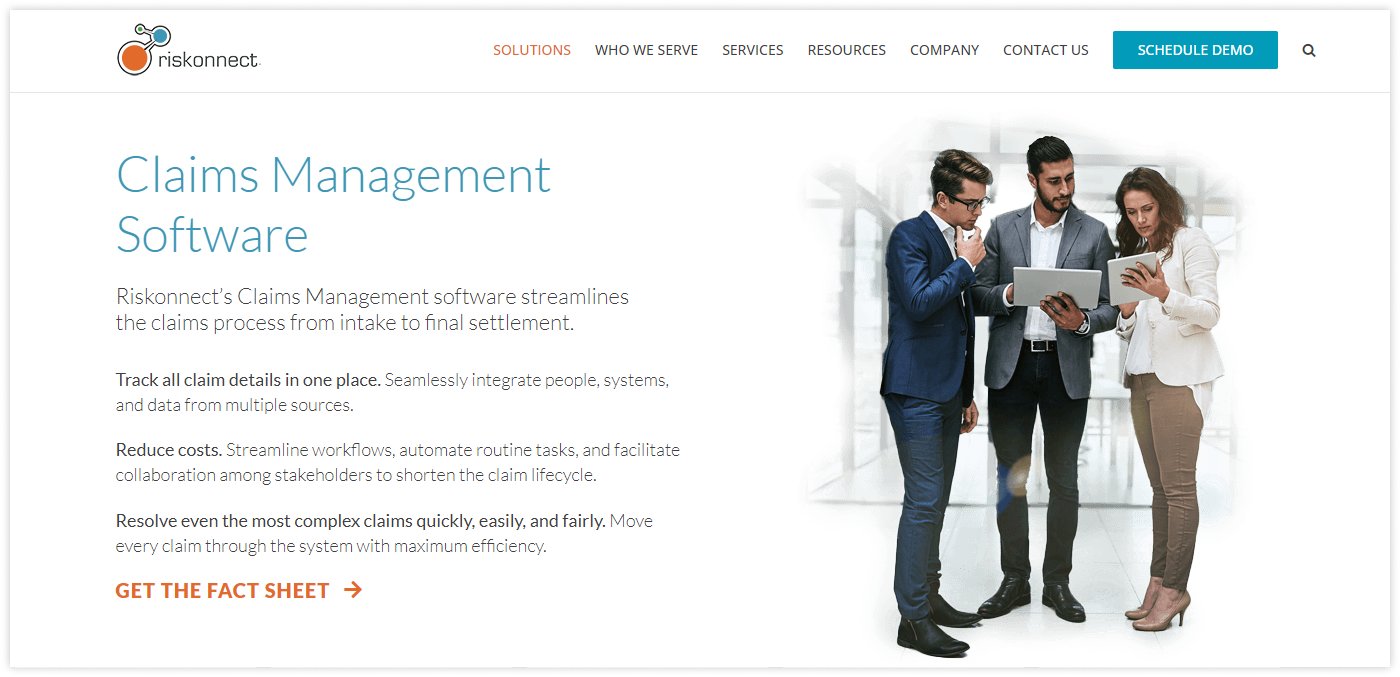
You can set up automatic notifications, connect instant data validation. The software interface has inbuilt forms for both smartphones and desktop versions.
Store and manage electronic invoices and checks. And with the in-built AI-powered assistant, you can identify fraudulent claims and perform fraud detection.
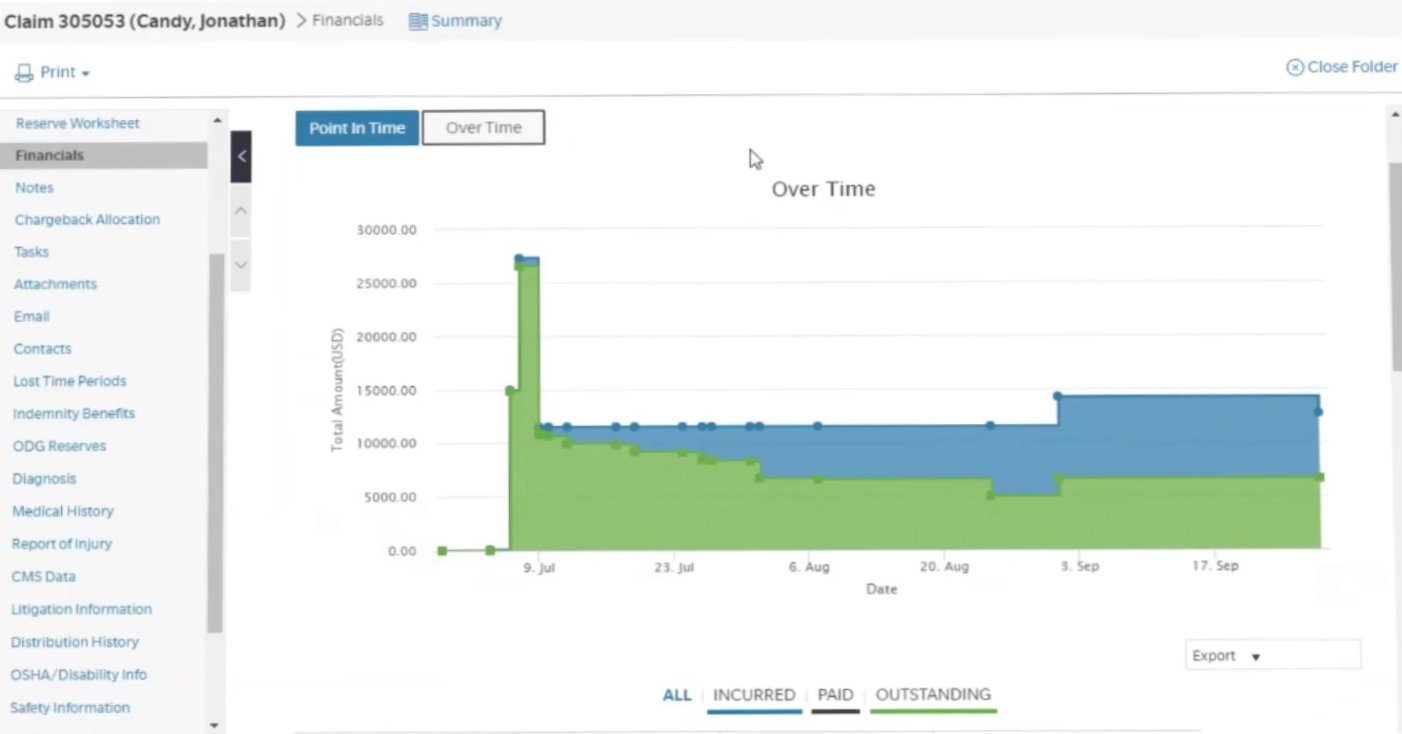
In addition to handling claims, Riskonnect allows you to streamline routine tasks, notifications, and alerts using configurable data-entry screens.
- Advantages: Highly customisable, robust analytics, suitable for large organisations.
- Disadvantages: High cost, steep learning curve.
Users value Riskonnect's advanced features and customisation but mention that the system requires significant time and resources to implement effectively.
Pricing
The pricing plans start at $50,000 per company per year.
5. SimplePractice
SimplePractice is a versatile PMS that caters to a wide range of healthcare providers, including solo practitioners and small practices. It offers features such as automated claims submission, real-time claim status updates, and integrated telehealth capabilities.
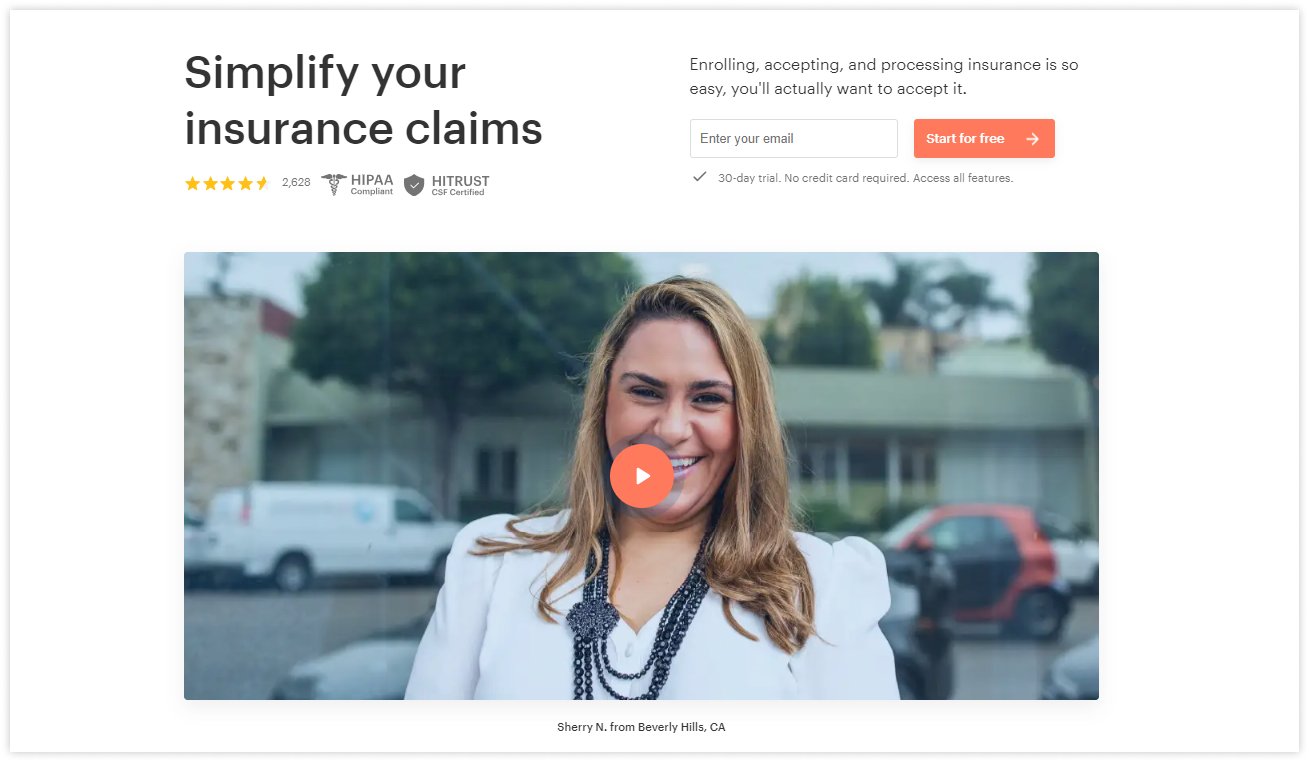
The platform provides you with integrated payment reports (ERAs) for easier bookkeeping. This function streamlines primary and secondary claim filing and helps you crate batch claims.
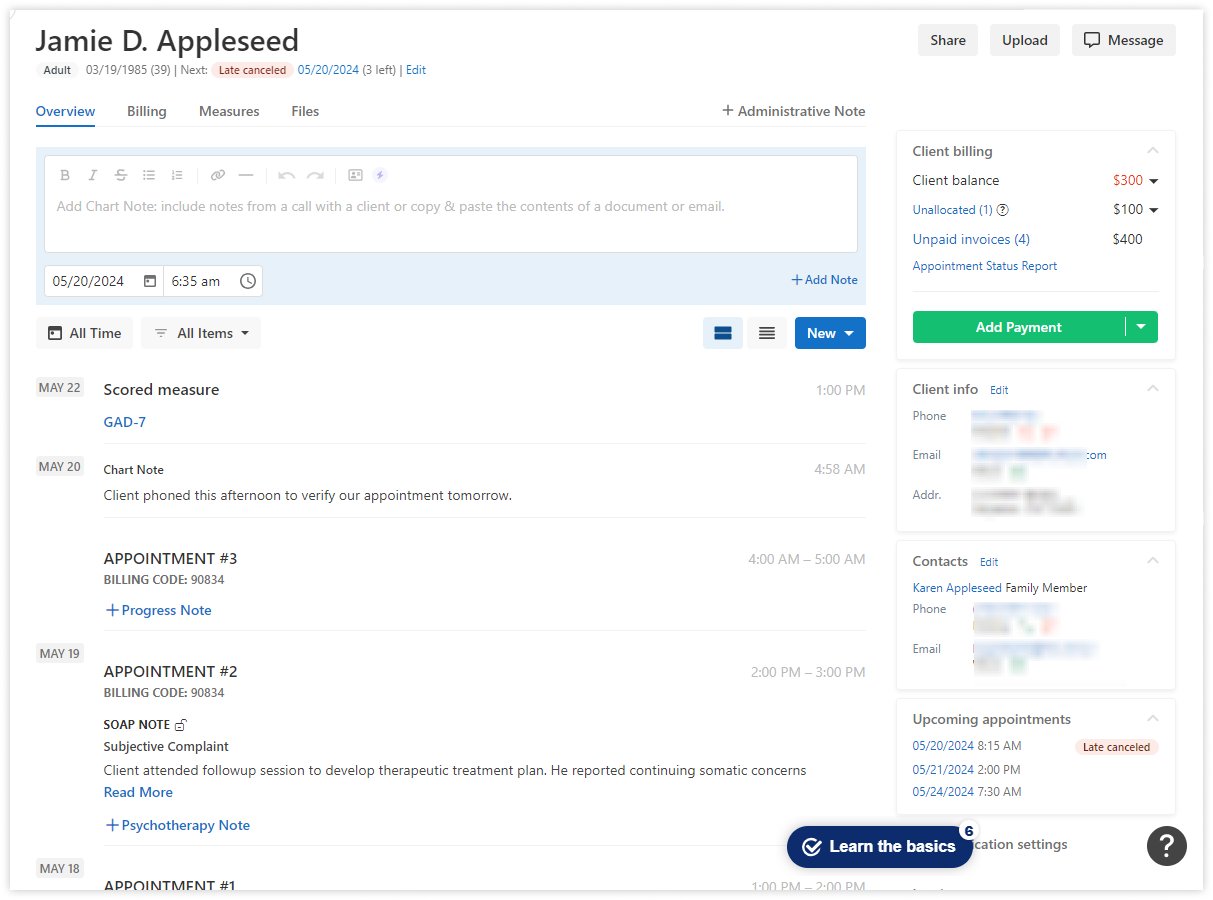
You can generate superbills or set the automatic creation if the insurer payer you work with supports this feature.
- Advantages: Easy to use, affordable, integrated telehealth features.
- Disadvantages: Limited features for large practices; basic reporting capabilities.
SimplePractice is an excellent choice for small practices due to its ease of use and affordability, though it may lack advanced features needed by larger organisations.
Pricing
There are 3 pricing plans starting at $14 per month (with a discount).

Insurance claim filling is available with the Essential plan and costs $0.25/claim additionally.
The importance of efficient claims management systems will only grow, making ECMS an essential component for any healthcare provider looking to optimize their revenue cycle management and improve patient outcomes.
The best way to choose a claims handling system is to sign up for a free trial and see for yourself.
